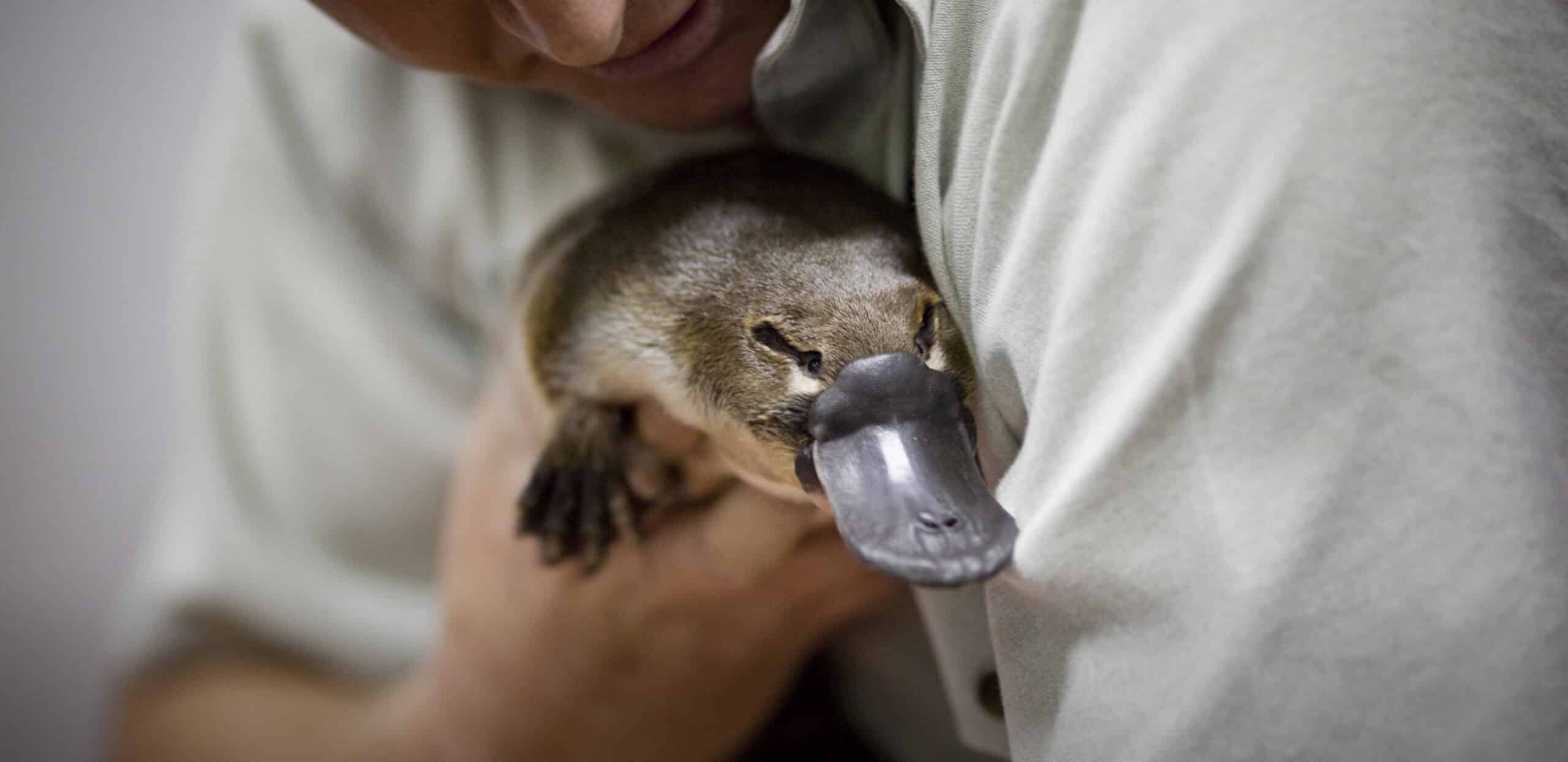Platypus sightings in Australia offer one of the most enchanting experiences for wildlife lovers and eco-tourists alike. As one of the world’s only egg-laying mammals, the platypus captures global fascination with its duck-bill, webbed feet, and elusive behavior. Whether it’s your first encounter or your fiftieth, seeing a platypus in the wild feels like witnessing a moment of magic. These sightings are most common in eastern Australia, particularly in Queensland, New South Wales, Victoria, and Tasmania, where conservation efforts and natural habitats intersect to keep these rare mammals visible to the public. Organizations like the Australian Platypus Conservancy and Wildlife Tourism Australia play a key role in protecting the environments where these shy creatures thrive.
In regions like Eungella National Park in Queensland or the Tyenna River in Tasmania, dedicated viewing platforms and nature trails make observing platypuses both accessible and respectful to their natural routines. According to the Australian Wildlife Conservancy, some areas report up to a 95% success rate in sightings during peak times. These figures are supported by national surveys conducted by the CSIRO, which highlight the importance of maintaining clean waterways and stable food chains for platypus sustainability. Local governments and volunteers have restored hundreds of kilometers of riverbanks through programs led by agencies like Parks Victoria and NSW National Parks, providing both habitat and education opportunities.
Seasonal timing also plays a crucial role in maximizing platypus encounters. Spring is an especially active period due to the mating season, and crepuscular hours—dawn and dusk—are the most rewarding times to catch a glimpse. These behavioral patterns are documented extensively by research institutions such as the University of Tasmania and Macquarie University, which continue to study platypus population trends, movement, and reproduction habits. On cloudy days or just after rainfall, visibility often improves, increasing your chance of success. Platforms like PlatypusSPOT allow travelers and citizen scientists to report their sightings and view others’ contributions across the country.
Beyond individual exploration, guided eco-tours are becoming a preferred method for ethical and educational encounters. These experiences are often hosted by local ecologists or wildlife experts and combine conservation messaging with real-time data collection. Many of these tours operate under sustainability frameworks accredited by the Ecotourism Australia and offer family-friendly packages that cater to all ages and accessibility needs. What makes these tours even more impactful is that a portion of the proceeds often funds conservation work—ensuring that platypus sightings in Australia remain possible for generations to come.
Whether you’re planning your trip for educational exploration, eco-adventure, or simple curiosity, understanding when, where, and how to observe platypuses ethically will transform your travel experience. From dense mountain rivers to quiet inland ponds, Australia’s rich biodiversity and growing environmental awareness continue to make it the premier destination for one of nature’s most extraordinary mammals.
Where to Spot Platypuses in the Wild
Eungella National Park: Queensland’s Platypus Paradise
Eungella National Park, located in Central Queensland, is one of the most reliable places for platypus sightings in Australia. With over 95% sighting success rates at Broken River, it’s a top destination for wildlife enthusiasts. The park features designated viewing platforms and informative signs that help visitors spot the elusive creature in its natural habitat.
Tasmania’s Fern Tree and Mount Field National Park
Tasmania is known for its pristine rivers and low human interference, making it ideal for observing platypuses. Mount Field National Park, near Hobart, has a strong population, and sightings are common along the banks of the Tyenna River. Tasmania has over 230 known platypus habitats, according to the University of Tasmania.
Blue Lake, Jenolan Caves, New South Wales
The Blue Lake at Jenolan Caves is another excellent site for platypus sightings in Australia. With clear, still waters and minimal predators, the area supports a stable platypus population. Sightings are especially common at dusk, and guided tours offer opportunities for visitors to learn and observe safely.
Shoalhaven River in New South Wales
Stretching over 327 kilometers, the Shoalhaven River is home to one of the largest platypus populations in NSW. A 2022 local government report recorded over 80 individual sightings in the upper catchment area. The river’s biodiversity and conservation programs have led to thriving aquatic life.
Yarra Ranges and Upper Yarra River, Victoria
The Upper Yarra River region within the Yarra Ranges is a hidden gem. A citizen science project conducted in 2021 by the Australian Platypus Conservancy documented over 60 platypus in a 30 km stretch, indicating a healthy ecosystem suitable for public spotting.
Tidbinbilla Nature Reserve, ACT
Located just outside Canberra, Tidbinbilla offers a combination of protected wetlands and education facilities. The reserve includes a Platypus Ponds trail, and a 2020 census estimated around 25 individual platypuses in the sanctuary.
Latrobe River in Gippsland, Victoria
The Latrobe River, flowing through lush vegetation, provides excellent conditions for platypus. According to a study by the Arthur Rylah Institute, the river hosts a stable population, with increased numbers noted since 2015 due to habitat restoration efforts.
Best Times of Year for Platypus Sightings
Early Morning and Dusk: Prime Viewing Windows
Platypuses are mostly crepuscular, meaning they are active during dawn and dusk. Most platypus sightings in Australia occur within the first two hours after sunrise and the last hour before sunset. Observers using this time window report a 70–80% higher success rate in known habitats.
Spring: Mating and Increased Activity
Spring (September to November) is the mating season for platypuses, and they become more active during this period. The Australian Wildlife Conservancy notes that activity levels increase by 35% during these months, providing more chances to spot them in the wild.
Summer Months: Beating the Heat Underwater
Though more elusive during the heat of the day, summer sightings are still common in cooler waterways. Rivers with shaded banks and deeper pools attract platypuses looking to cool off. A 2019 field study from Macquarie University showed a 25% activity drop during high-temperature days, reinforcing the importance of early or late visits.
Winter: Lower Activity but Higher Visibility
In winter, the platypus’s activity decreases slightly, but the lack of vegetation and fewer insects improve visibility. Surveys by the NSW Department of Environment recorded consistent winter sightings in highland regions such as the Snowy Mountains and Blue Mountains.
Avoiding the Wet Season in Tropical Areas
In northern Queensland, such as Eungella National Park, the wet season (December to March) floods habitats, reducing visibility. Experts advise visiting in the dry season for optimal sighting conditions, as murky waters during rains can obscure the animal’s movements.
Cloudy Days Yield Better Results
Overcast skies help minimize reflections on the water, making it easier to spot the ripple effects caused by swimming platypuses. A 2021 observation log from PlatypusWatch noted a 15% increase in sightings on cloudy days compared to bright sunny ones.
After Rainfall: Abundant Food Leads to Foraging
Platypuses often forage more actively after rain, when insect larvae and freshwater shrimp become plentiful. The increase in prey correlates with greater surface activity, resulting in improved platypus sightings in Australia according to wildlife logs from Victoria’s Dandenong Ranges.
Conservation Efforts Protecting the Platypus
Legal Protection under Environmental Acts
The platypus is listed as “Near Threatened” under the IUCN Red List. In Australia, it receives protection under the Environment Protection and Biodiversity Conservation (EPBC) Act. This legal status ensures that its habitats are safeguarded from destructive human activity.
Habitat Restoration Initiatives
Habitat loss remains a major threat. Groups like the Australian Platypus Conservancy have restored over 500 km of riverbank vegetation since 2010. These projects aim to reduce sedimentation and improve water quality, both of which are critical for platypus sightings in Australia to continue.
Citizen Science Programs Enhancing Data Collection
Initiatives like PlatypusSPOT and Waterwatch engage citizens in monitoring sightings. These efforts have recorded over 10,000 sightings nationwide since 2017, helping biologists track distribution changes caused by climate shifts and urban development.
Combatting Invasive Species and Predators
Introduced species like red foxes and feral cats pose serious risks. Recent data from the University of Sydney show that up to 30% of juvenile platypus mortality is linked to predation. Targeted control programs have significantly reduced predator numbers in national parks.
Reducing Pollution and Plastic Waste in Waterways
Pollution, especially discarded plastic rings, has led to entanglement injuries. Organizations such as Clean Up Australia and local councils have collaborated to remove over 80 tonnes of waste from major platypus habitats in 2023 alone.
Climate Change Adaptation Strategies
With reduced rainfall and higher temperatures, platypus habitats are drying up. CSIRO is working on predictive modeling to guide reforestation and artificial pond creation to ensure continued survival and increase platypus sightings in Australia even in changing conditions.
Education and Awareness Campaigns
Awareness campaigns in schools and communities have grown. A 2021 survey showed that 68% of Australians are now aware of the platypus’s vulnerable status, a sharp increase from 42% in 2010. This shift encourages responsible tourism and ecosystem protection.
The Role of Local Tours in Enhancing Platypus Encounters
Guided Walks Improve Spotting Success
Local guides often know exact hotspots, behavior patterns, and the best times for observation. In Queensland’s Broken River, guided tours have a 90% success rate for platypus sightings in Australia, compared to 55% for solo travelers.
Eco-Friendly Boats and Kayak Tours
Non-motorized boats used in regions like the Upper Shoalhaven minimize noise and water disruption. According to Wildlife Tourism Australia, eco-tours using kayaks increase sighting probability by 60%, particularly during early morning hours.
Educational Insights from Naturalists
Local tours are often led by trained naturalists who share information about the species’ unique biology, like their electrolocation and venomous spurs. Surveys show that 78% of tourists prefer tours that combine wildlife viewing with in-depth education.
Contributions to Conservation Funding
Many tour operators donate a portion of their proceeds to conservation. For example, Platypus Eco Tours in Tasmania contributed $45,000 in 2023 to habitat protection. This direct funding supports habitat restoration and ensures sustainable platypus sightings in Australia for years to come.
Monitoring and Data Collection During Tours
Tour guides often double as data collectors, documenting sightings, water quality, and animal behavior. This citizen-science contribution adds hundreds of data points annually to national platypus monitoring databases managed by organizations like Wild Platypus Research Group.
Night Vision and Infrared Technology
Some advanced tours now use infrared goggles or low-light cameras to increase chances during dusk or cloudy evenings. These technologies have increased detection rates by 20% in dense vegetation areas where visibility is usually poor.
Family-Friendly and Accessible Options
Many tours are designed for families and people with mobility challenges. With wheelchair-accessible platforms and short walkways, they open opportunities for more people to experience platypus sightings in Australia without disrupting the environment.




